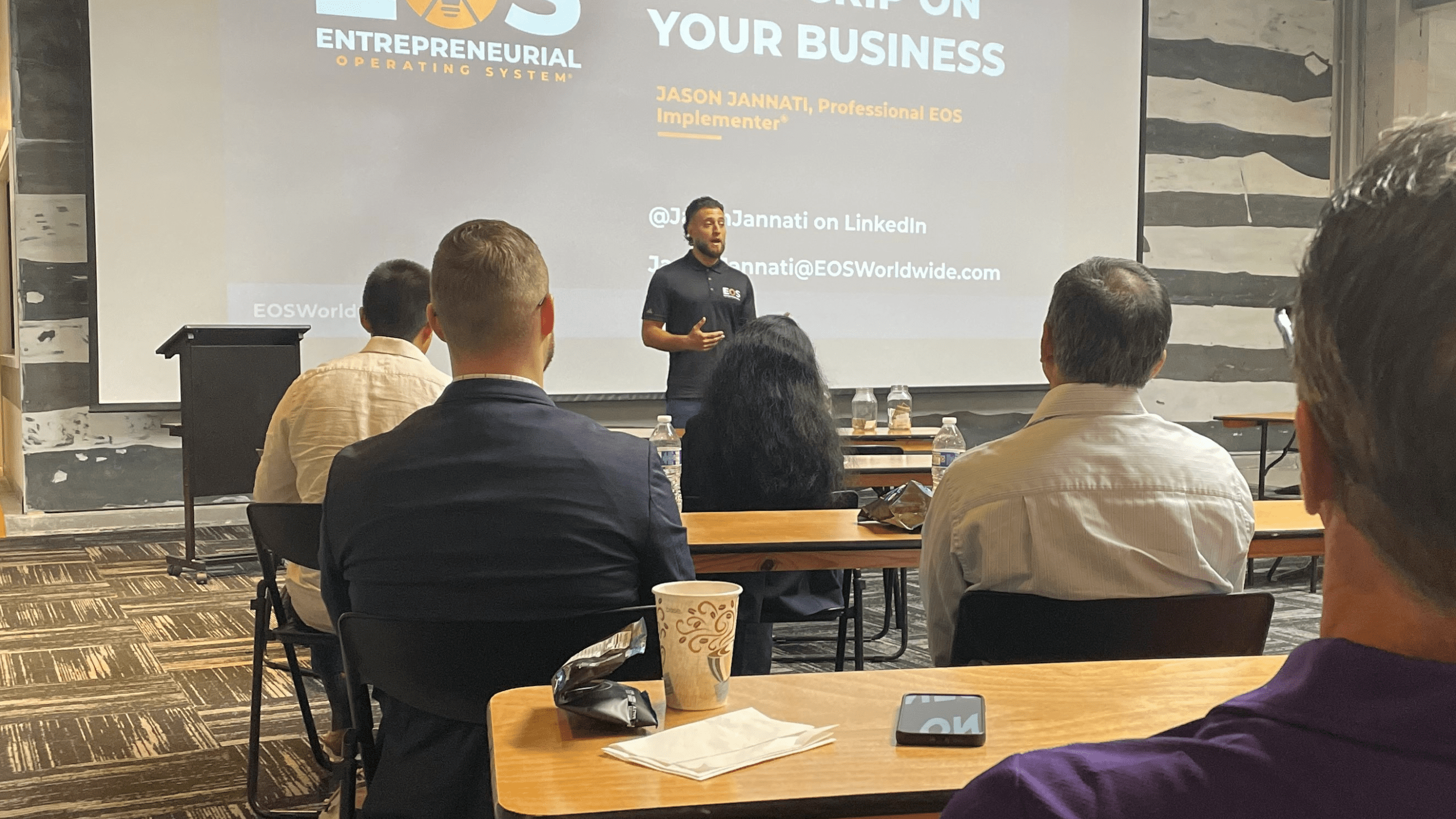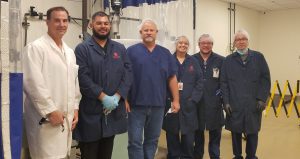
Ecphora Seminar Series: Building Better Leaders and Teams with Jason Jannati
Jason Jannati, a Professional EOS Implementer, shares leadership insights at the Ecphora Seminar Series and unpacks the Entrepreneurial Operating System (EOS) for Enhanced Team Cohesion and Organizational Success
September 27, 2024
| BioBuzz has been connecting the life science workforce since 2009. We’ve built an expansive community in the Mid-Atlantic with a national readership that spans from Massachusettes to Florida, and New York to California. For our next chapter, we’re building a proprietary talent logistics model to help employers source and hire life science talent. Learn more. |
In a recent Ecphora Seminar Series session, Jason Jannati delved into the intricacies of the Entrepreneurial Operating System (EOS) and its impact on building stronger leaders and more cohesive teams. Jannati’s insights offer a practical approach to achieving organizational clarity, accountability, and sustainable growth.
Jannati began by emphasizing the fundamental premise of EOS: vision, traction, and healthy organizational culture. “Vision without traction is hallucination,” he asserted, highlighting the necessity of aligning daily and weekly actions with long-term goals. EOS ensures that leadership teams stay on track and grow stronger across six key components: vision, people, data, issues, process, and traction.
Vision: The Foundation of Success
The first step in the EOS journey is establishing a clear vision through the Vision Traction Organizer (VTO). This involves answering eight critical questions, starting with core values. Jannati shared his core values: bravery, kindness, and curiosity, coupled with extreme ownership.
“These values are not just fluffy stickers on the wall,” he explained. “They are the foundation of how we operate.”
Next, Jannati discussed the importance of a core focus, long-range targets, and marketing strategy. He emphasized that companies often fail not due to a lack of opportunities but because they spread themselves too thin.
“Focus on what you’re great at and serves your purpose,” he advised.
Traction: Turning Vision into Reality
The concept of “rocks,” or quarterly goals, is central to gaining traction. Jannati explained that identifying the most critical tasks for the next 90 days ensures that teams prioritize effectively. He used the analogy of a jar filled with rocks, sand, and water to illustrate how major priorities (rocks) must be addressed first to avoid being overwhelmed by minor tasks (sand and water). Jannati emphasized the importance of having the right people in the right seats, a principle encapsulated in the People Analyzer tool.
“Right people meet your core values, and right seats mean they get it, want it, and have the capacity to do the job,” he noted.
This tool helps organizations identify and address people-related issues efficiently.
Data and Issues: Leading with Facts
Leading with data is another cornerstone of EOS. Jannati encouraged leaders to focus on key activity-based indicators rather than lagging metrics like revenue. This proactive approach allows teams to address issues before they escalate.
“What do you need to see on a weekly basis to know your company’s on track?” he asked.
When it comes to addressing issues, Jannati advocated for the IDS (Identify, Discuss, Solve) method. He warned against endless discussions and emphasized the importance of resolving:
“Discuss it one time; more than once is politicking.”
Processes and Meeting Cadence
Documenting and following core processes is crucial for consistency and efficiency. Jannati advised against creating overly detailed manuals that no one reads. Instead, he recommended high-level bullet points that clearly outline essential steps.
He also shared the Level 10 Meeting agenda, a structured format designed to make weekly leadership meetings productive and focused. This agenda includes reviewing scorecards, rocks, customer/employee headlines, and to-dos, followed by tackling the prioritized issues list.
Engaging Questions for Reflection
Jannati also posed several thought-provoking questions for attendees to consider, such as:
- What are your core values and how do they shape your leadership style?
- How do you determine the most important tasks to focus on each quarter?
- How do you ensure that you have the right people in the right seats within your organization?
- What key activity-based indicators do you track to ensure your company stays on track?
These questions serve as a catalyst for deeper reflection and can guide leaders in strengthening their organizational effectiveness.
Jason Jannati’s session at the Ecphora Seminar Series provided a comprehensive overview of how the Entrepreneurial Operating System (EOS) can transform leadership teams and organizations. Companies can achieve greater clarity, accountability, and sustainable growth by focusing on vision, traction, and healthy culture and leveraging tools like the People Analyzer and IDS method.
- About the Author
- Latest Posts
BioBuzz is a community led, experience focused, biotech and life sciences media and events company. BioBuzz highlights regional breaking news, industry professionals, jobs, events, and resources for business and career growth. Their weekly newsletter is subscribed to by thousands in the BioHealth Capital Region and Greater Philadelphia as the go-to for industry updates.








